Type 9s are cooperative, sympathetic, and tactful diplomats.
Reading time: 5 minutes

Gregory Park, Ph.D.
Author
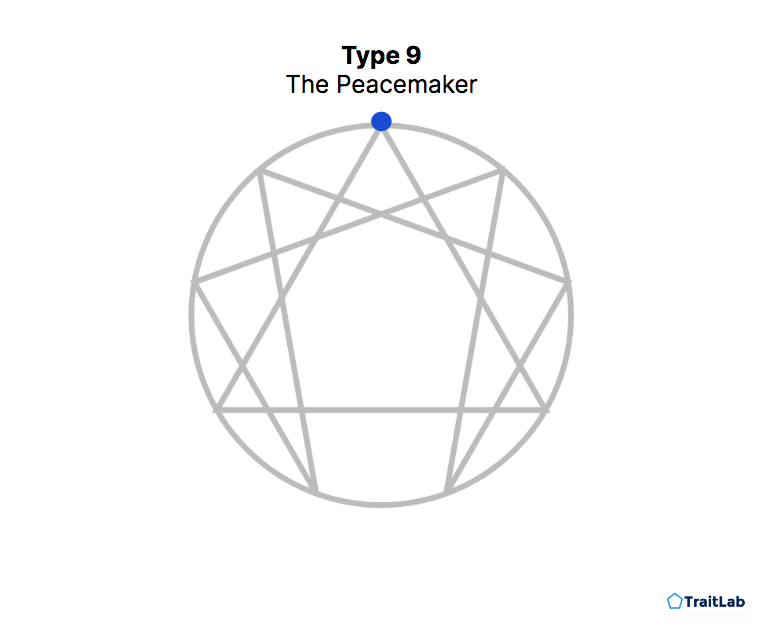
In the Enneagram framework, Type 9s — also known as Peacemakers or simply Nines — are cooperative, sympathetic, and tactful diplomats.
Hook and colleagues (2021) suggest that Type 9s’ core fear is being lost, separated, and fragmented. Type 9s’ core desire is a need for stability. When they are overly preoccupied with these core motivations, Type 9s ignore difficult issues in their own lives, procrastinate, and avoid taking the initiative and stepping out of their comfort zone.

Do you know your closest Enneagram type?
See how your personality compares to all nine types with TraitLab's comprehensive assessment.
Others might describe Type 9s as
The wordcloud below shows the top 100 words used to describe Type 9s. Bigger words describe the more prominent aspects of most Type 9s.
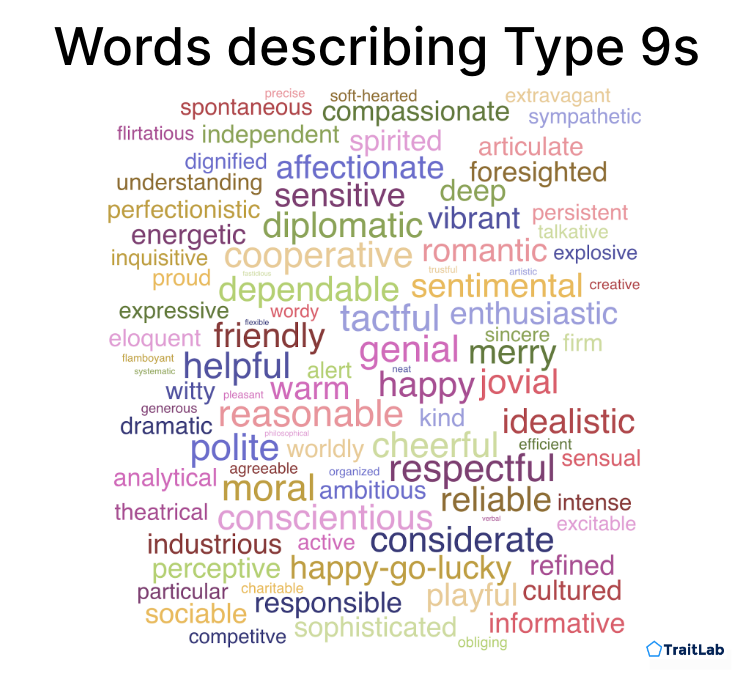
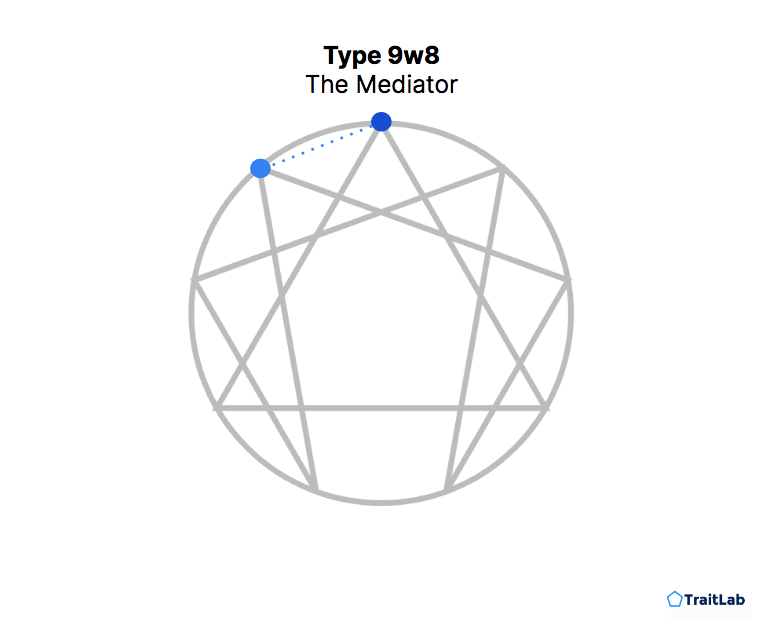
Type 9s with an 8 wing, or 9w8s, take on some characteristics of Type 8: The Challenger, including Type 8’s more practical, goal-oriented mindset. While 9w8s are still highly agreeable, Type 9w8s are assertive, self-assured, and less susceptible to people-pleasing.
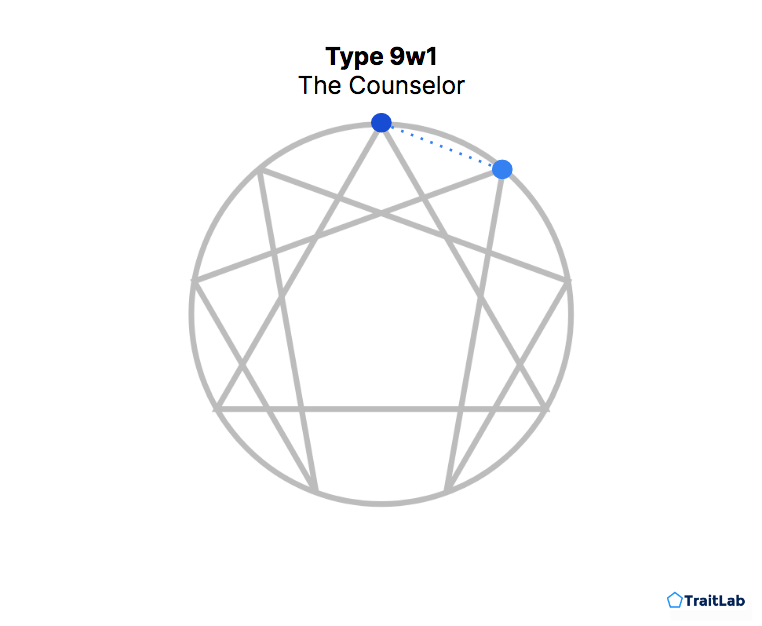
Type 9s with a 1 wing, or 9w1s, exhibit characteristics of Type 1: The Reformer. Type 9w1s combine the interpersonal sensitivity of their Type 9 counterparts with a more systematic approach. Type 9w1s excel at applying organization and structure to the messy world of human emotions and relationships.
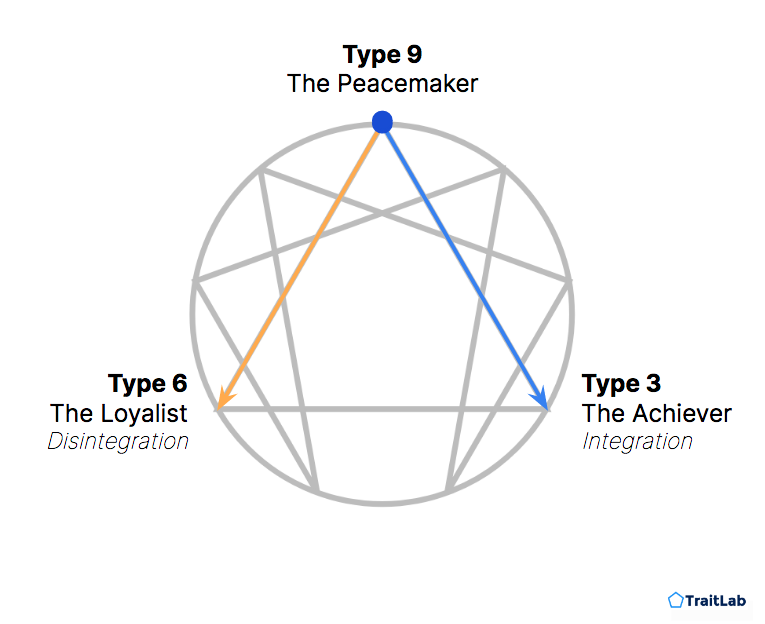
In times of health and security (i.e., integration), Type 9s shift towards Type 3: The Achiever. One indication of this shift is a greater awareness of one’s own goals and a stronger resolve to take action to achieve them. Healthy 9s can channel their effort inward rather than solely towards others.
In times of stress (i.e., disintegration), Type 9s shift towards Type 6: The Loyalist. Following this shift, Type 9s maintain their outward focus but become less open to new ideas, less reflective, and less empathetic. Disintegrated 9s lose sight of their own needs and are more likely to be resentful and frustrated by their interpersonal relationships.
Based on their distribution of personality traits, TraitLab estimates that roughly 25% of people would be classified as Type 9s. This makes Type 9s the most common type.
In studies of personality structure, researchers often use a trait-based approach to describing the differences between people instead of personality types. The most well-established method is the Big Five, which describes differences along five broad dimensions:
Personality types are far less precise than getting exact Big Five measurements, but knowing your personality type can give you a rough idea of where you fall on each dimension.
In the graph below, each dot is a Type 9, placed by where they fall on the Big Five dimensions. You can see that Type 9s can vary quite a bit on any single dimension.
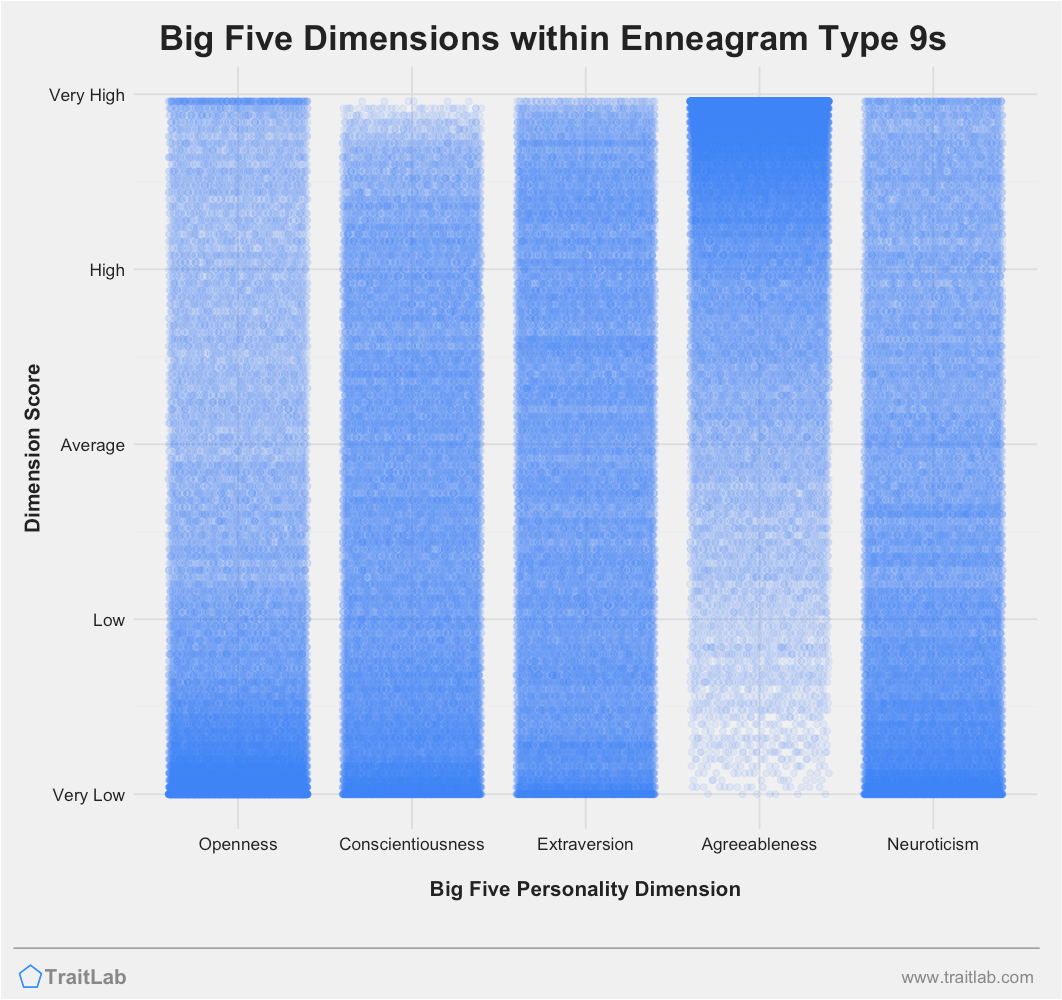
For example, on the Agreeableness dimension, Type 9s tend to score much higher than average, so the High and Very High areas are very dark blue. However, there are still a few rare Type 9s in the middle of the Agreeable spectrum.
Below, you can see more detail on how Type 9s score on each Big Five dimension.
Type 9s tend to score lower on Openness to Experience, meaning they are often more conventional or traditional. Most Type 9s score below average on this dimension.
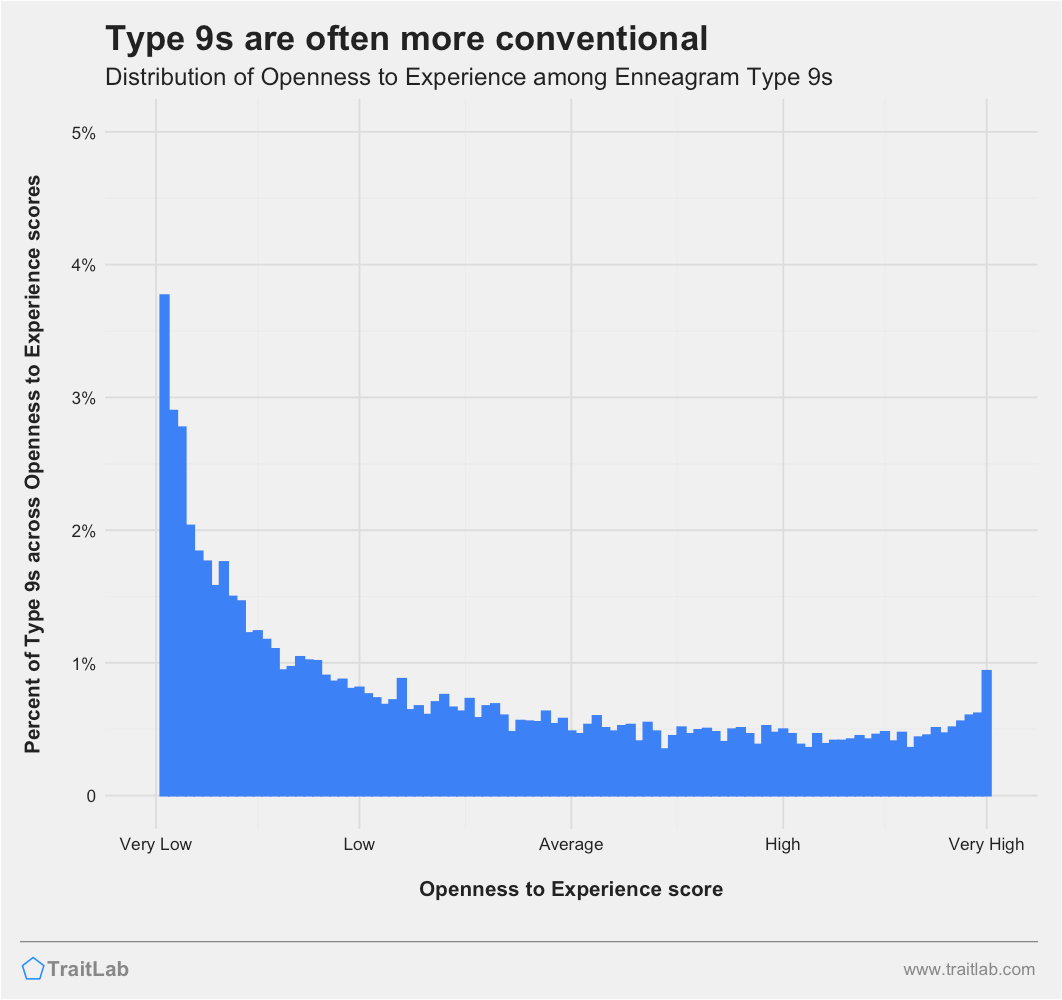
Openness to Experience describes your need for new information, feelings, and experiences.
Less open people prefer the familiar ways of doing things. They are less interested in trying new things or seeking out new experiences. They also tend to be less eccentric and have more conventional tastes in hobbies, music, and reading material.
Highly open people have diverse interests, and they may feel a constant need to learn and try new things.
Conscientiousness describes one’s tendency to make detailed plans, be highly organized and systematic, and follow consistent, regular schedules.
The relatively low conscientiousness of Type 9s means that they more readily accept chaos and irregularity and may actively avoid what they perceive as being too organized or systematic.
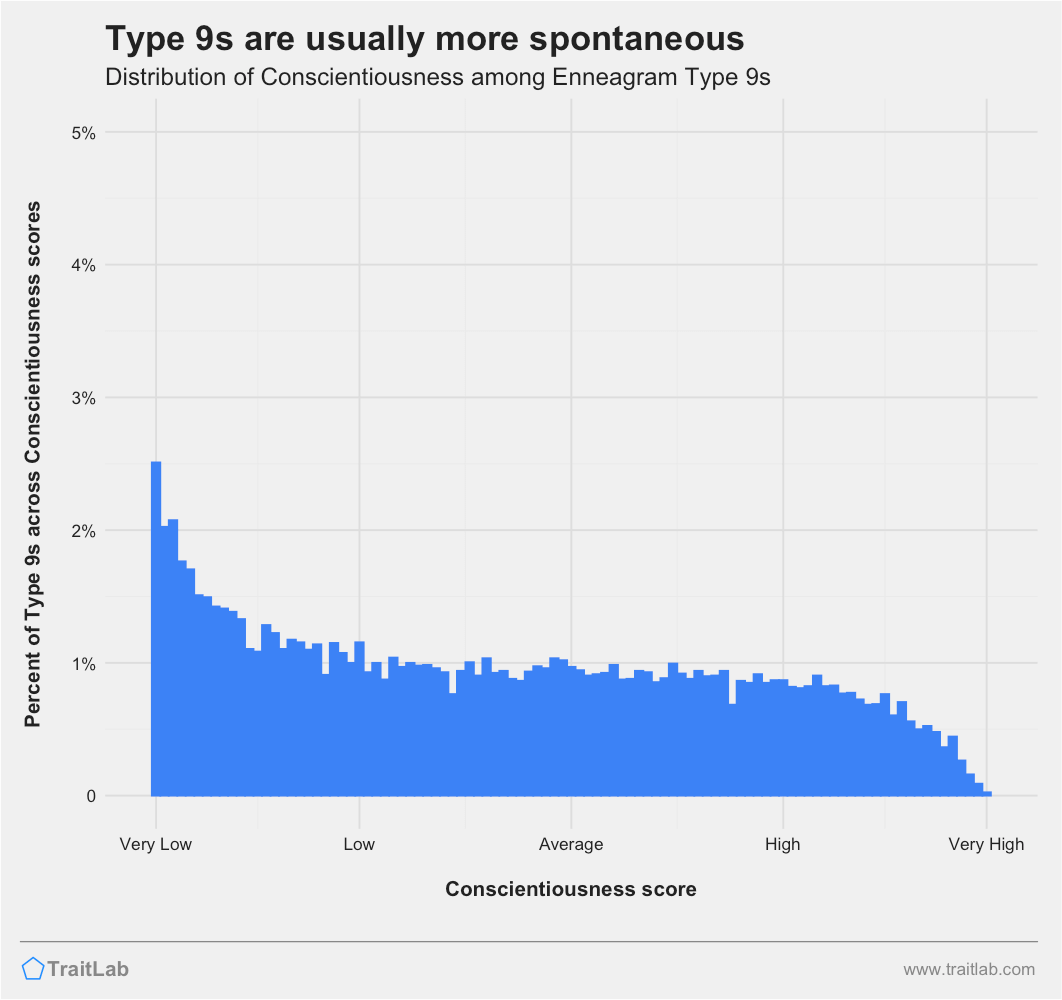
Type 9s are less likely to be highly focused and dedicated to a single long-term goal. Instead, they tend to act more impulsively, happily bounce between smaller, short-term projects and goals.
Lastly, Type 9s will feel less obligated to carefully follow widely accepted social norms, rules, and regulations in several areas of life. They may opt for an unconventional or even rebellious approach.
Type 9s vary widely on the Extraversion/Introversion spectrum. Some Type 9s are highly extraverted, others are highly introverted, and most are somewhere in between the extremes. In general, Extraversion describes one’s social enthusiasm, positive emotionality, and assertiveness.
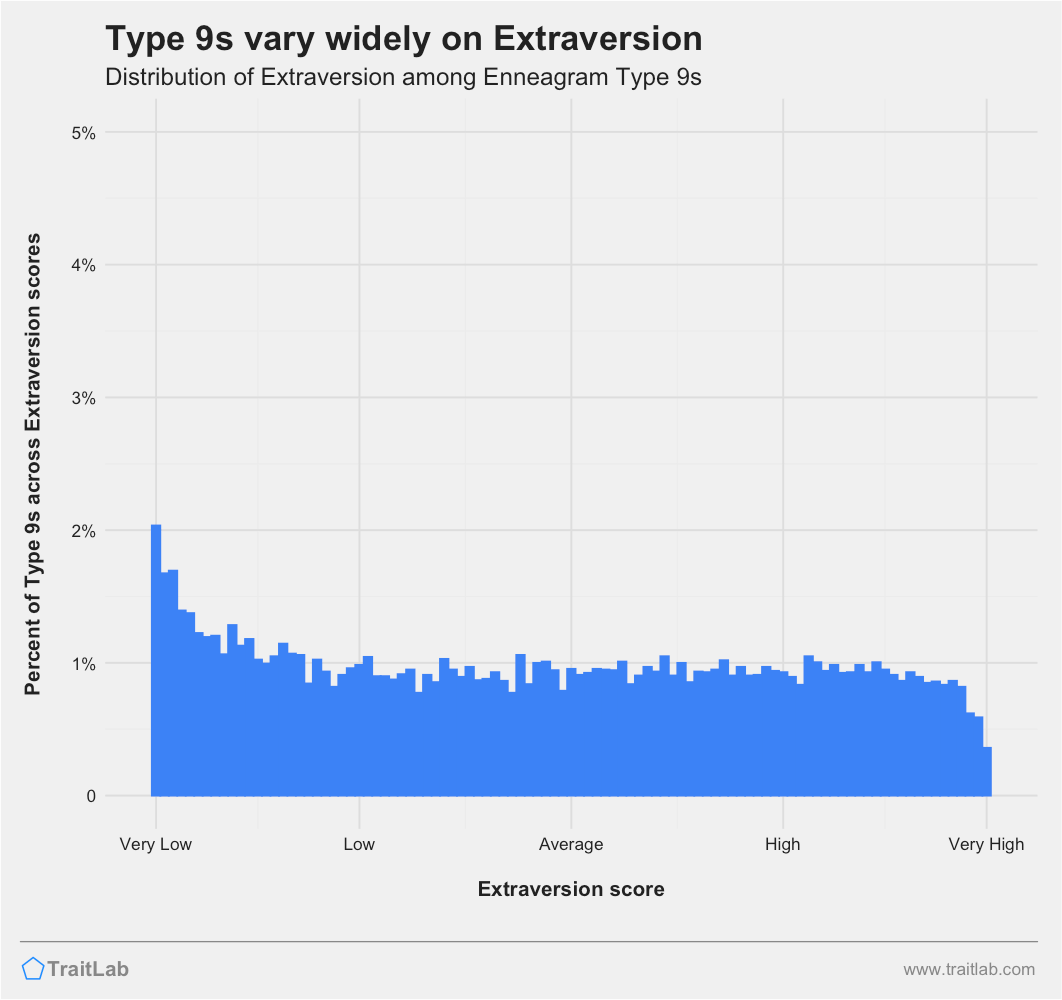
More extraverted Type 9s will naturally gravitate towards social engagement and generally show greater enthusiasm in social situations — smiling, laughing, and keeping the energy up and moving. They will be more likely to open up, share their point of view, and gently persuade others to see things their way.
More introverted Type 9s will seem more emotionally muted and reserved compared to their extraverted counterparts. They will act and react more subtly in social situations, and they will occasionally need to withdraw into solitary activities. They are more likely to sit back and listen, and act more passively around others.
Type 9s tend to be much more agreeable than most.
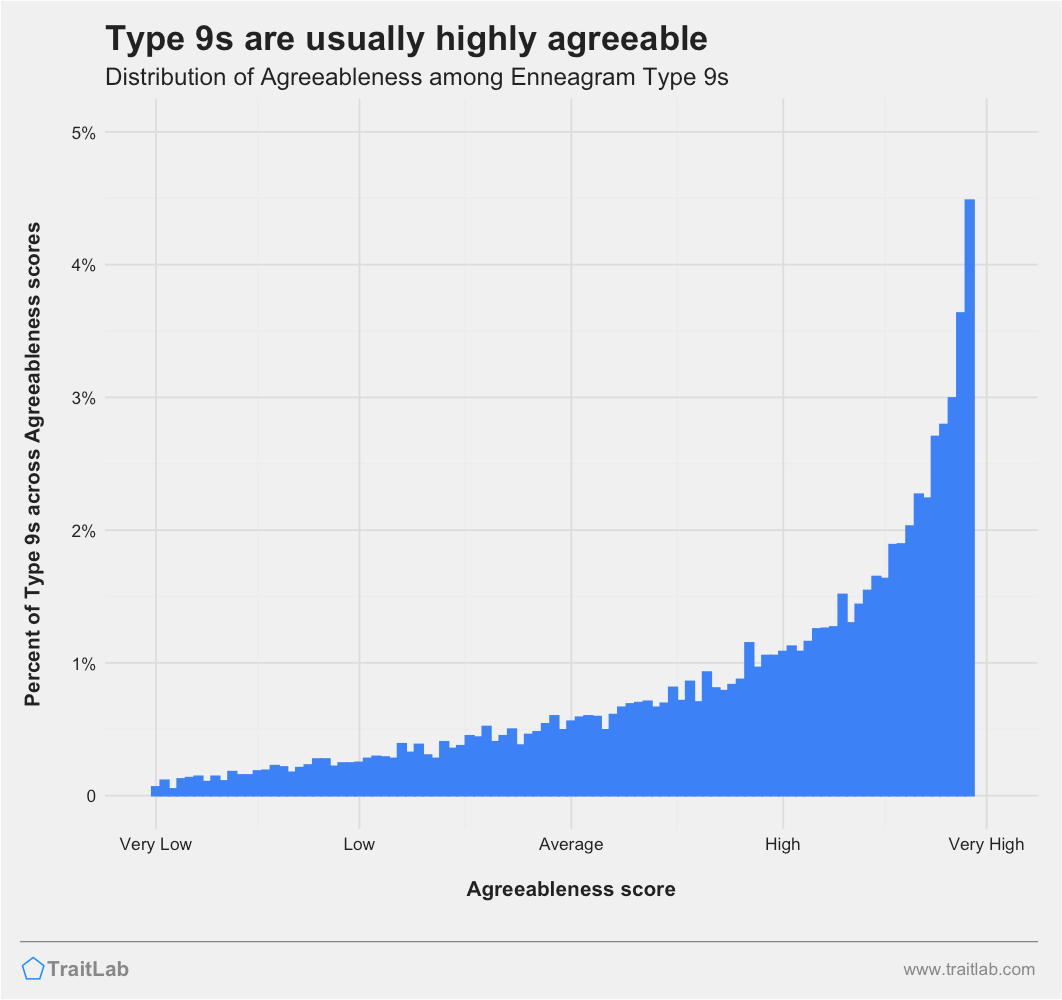
Agreeableness describes your interpersonal warmth, politeness, and empathy.
As a group, Type 9s are usually highly agreeable, with many Type 9s falling at the extreme high ends of Agreeableness. Agreeableness describes tendencies to create and nurture positive relations with others, a general sense of trust in other people, and empathy — the capacity to sense and feel the emotions of others.
Highly agreeable people, like most Type 9s, are highly sensitive to interpersonal issues, and will try to minimize any negative impact their actions may have on other people. Type 9s are more likely to put off their own goals if it could potentially disrupt or harm a good relationship, and if a Type 9 senses distress or other interpersonal problems, they will naturally jump at the chance to comfort and resolve it.
While Type 9s also vary in their level of Neuroticism, most Type 9s fall on the lower, more emotionally stable end of the Neuroticism spectrum.
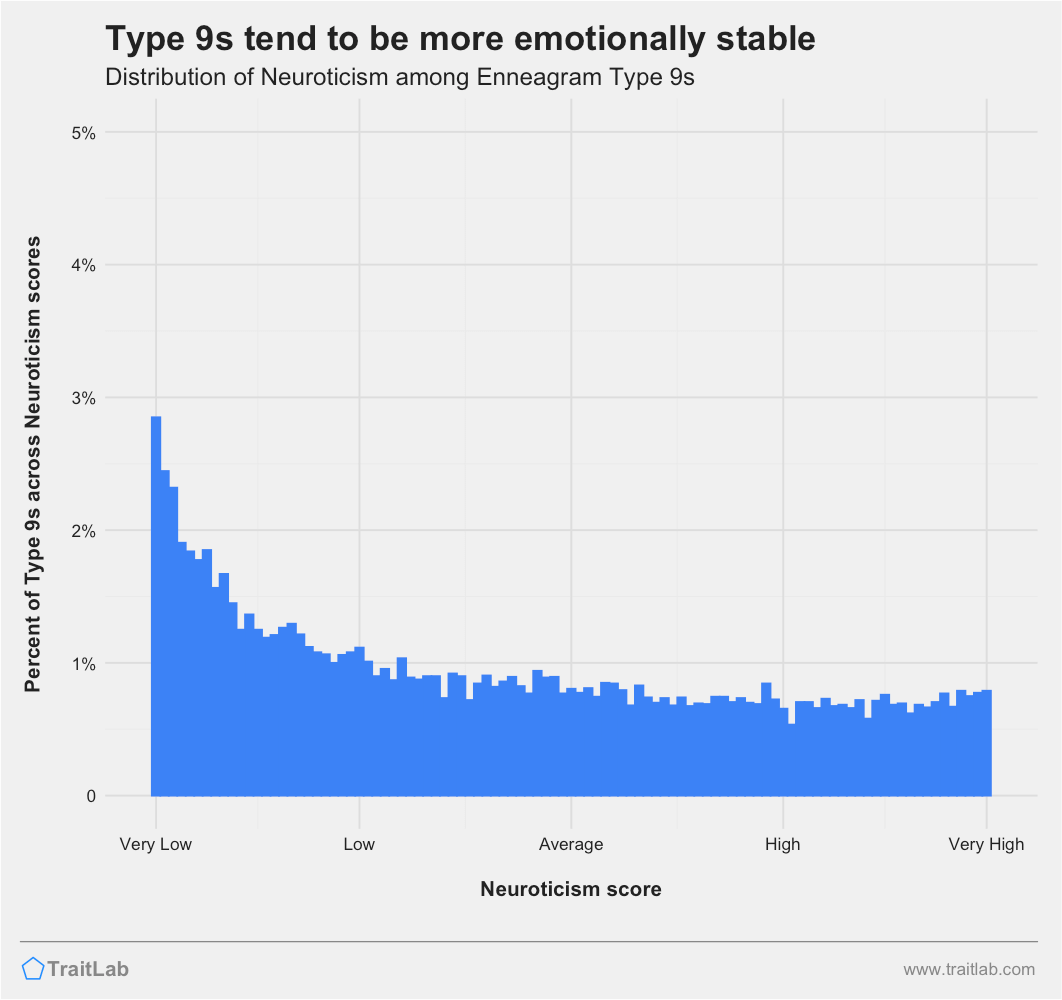
Neuroticism describes how we react to stress and our tendency to experience a variety of negative emotions. As most Type 9s are less neurotic or emotionally stable, they tend to have steadier, more predictable moods, and can more easily adapt to life’s sudden changes and disruptions.
Less neurotic people, like most Type 9s, generally experience less anxiety, anger, frustration, and sadness. They still experience these negative emotions, but less frequently and with less intensity than their more neurotic counterparts. Likewise, they tend to ruminate less on bad experiences and are less likely to doubt and second-guess themselves, resulting in a calmer, more confident style of thinking through problems and decision-making.
Most personalities can’t be described perfectly by a single Enneagram type.
However, with TraitLab’s Enneagram test, you can see which of the nine Enneagram types is most similar to your personality.
For comparisons between Type 9s and other Enneagram types, visit any of the type pairings below: